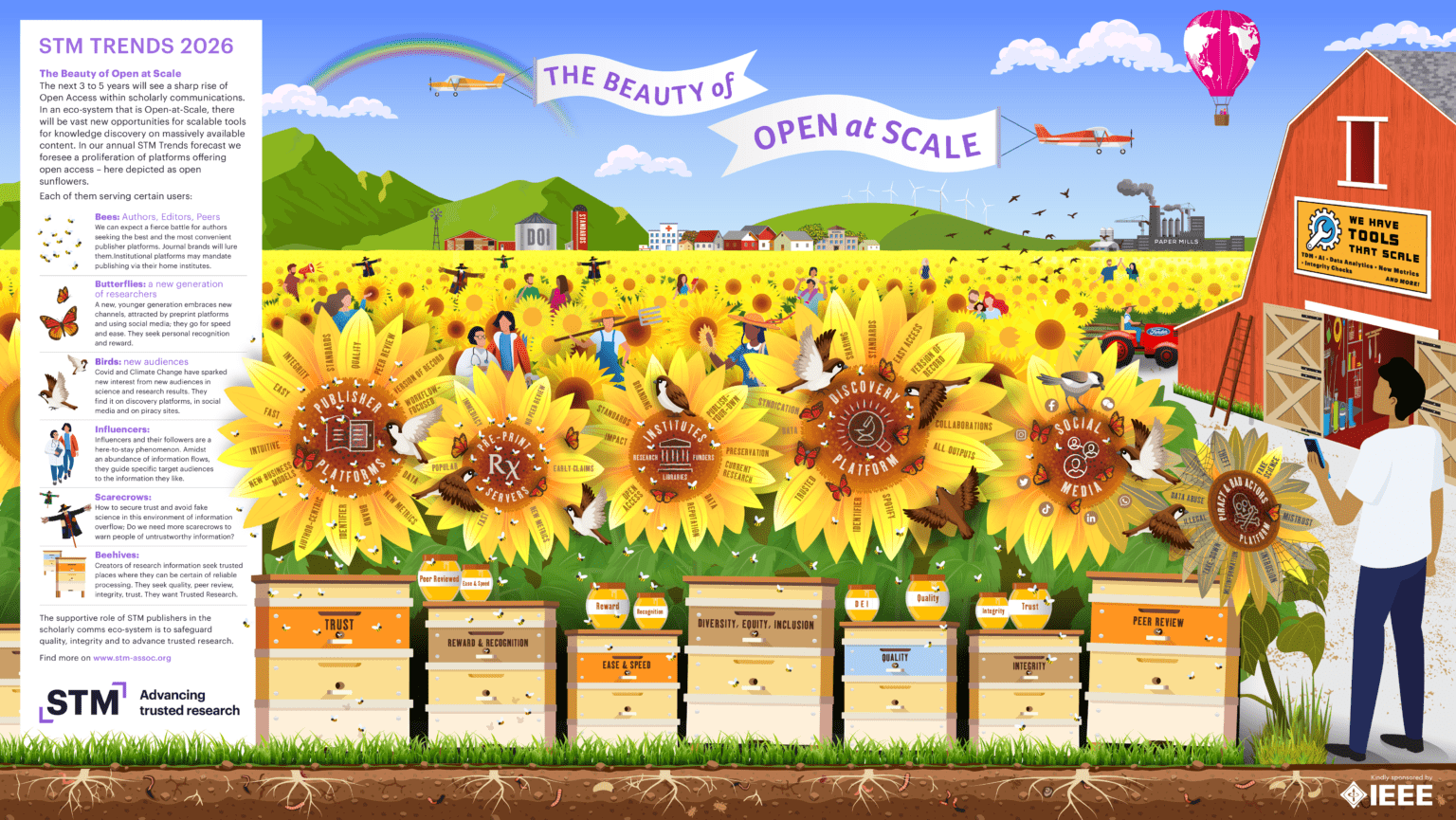Earlier this year, the STM Association released its forecast for the scholarly publishing landscape in the next three to five years. The STM 2026 Trends report foresees a rapid proliferation of Open Access platforms, which is beautifully captured in an infographic explaining the theme for the year – The Beauty of Open at Scale. With new collaborative open access publishing models taking shape, the time is ripe for a faster, more impactful change in the scholarly publishing space1. In this article, we take a deeper look at the STM 2026 Trends and the key messages it delivers.
The STM 2026 Trends theme has been illustrated in the form of a field of open sunflowers, with each sunflower representing various content platforms, while STM publishing stakeholders are shown as butterflies, bees, birds, influencers, scarecrows, and beehives. The STM Trends report anticipates a jump in the number of content platforms disseminating information, with a majority of research output being available on diverse platforms that are open and free-to-read. By enabling the faster, smoother dissemination of knowledge, open access, much like the blooming sunflowers, will lead to the rapid advancement and blossoming of scientific research. The Open-at-Scale theme also makes way for the STM publishing industry to explore scalable tools, based on AI and data mining, for knowledge discovery through available open access content. This is expected to have a significant and positive impact on the STM publishing industry and research landscape.
The STM 2026 Trends Infographic: Overview

In the STM 2026 Trends infographic above2, content platforms are represented by a field of sunflowers. The bees hovering over the sunflowers represent the authors, editors, and peer reviewers, who are most involved in ensuring research output in the STM publishing industry. The butterflies represent the next generation of researchers who sojourn on too many new platforms, such as preprint servers, looking to establish early claims and immediacy. The birds circling overhead represent the new, more curious audiences hungry for relevant science news. Fertilizing the farm is the farmer, who represents the funders of research, while the scarecrows are present to warn against misinformation that may spread due to abundance of open information. Finally, the many beehives at the forefront of STM publishing is where research content is processed based on key principles of trust, quality, and peer review; this is also where authors can garner recognition and rewards for the work done.
The STM 2026 Trends report and its Open-at-Scale forecast is already taking shape, with several STM journals tweaking their subscription models and new types of content platforms gaining ground. It is time for publishers to rethink content syndication, tap new diverse researcher platforms, and keep up with how different platforms interact in order to stay relevant. However, it is also critical to know what researchers feel about this forecast and its implications on the larger STM publishing industry.
To know more about the STM Trends 2026 Forecast, visit the page here.
References
- Naim K., Brundy C., Samberg RG. Collaborative transition to open access publishing by scholarly societies. Mol Biol Cell. February 15, 2021; 32(4): 311-313. doi: 10.1091/mbc.E20-03-0178
- Forecasting the Future. STM Trends 2026. https://www.stm-assoc.org/standards-technology/stm-trends-26/



